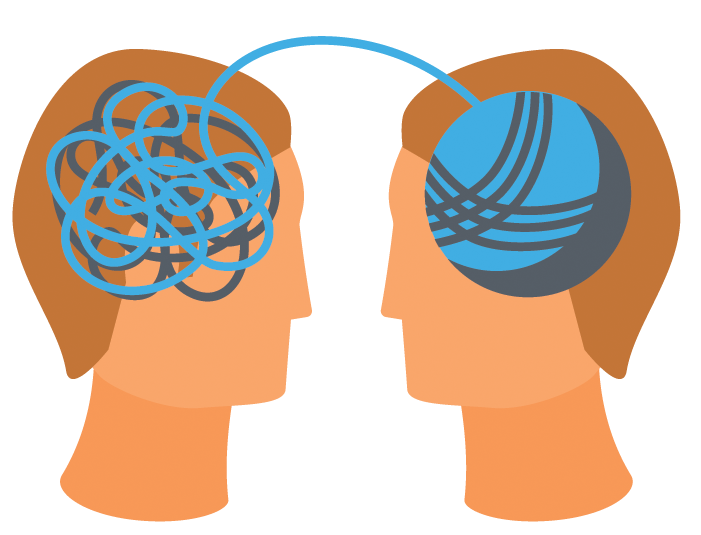If you want to win more customers, there is a timeless marketing strategy you must follow.
This might sound a bit hyperbolic, since the boundaries of when, where, what and how of your marketing strategy is usually defined by the industry you're in, or the type of business you run.
Those differences usually determine which platform you use to advertise, what kind of media you'll use, which season, what kind of messaging, and so on...
But there are a few universal strategies that all brands can - and should - base their marketing on, no matter what business they're in.
Today I'm going to share one of these fundamental strategies that will work regardless if you're an ecommerce business or brick-and-mortar store, a retail or manufacturing giant, an agency of creatives, or a company with 1 employee or 1000!
This timeless strategy answers the WHY of any marketing plan.
And that's tapping into human emotion.
Tapping into human emotion, also called "emotional marketing," helps you develop messaging that is engaging and persuasive, without being over the top.
When done correctly, you can more easily form deep connections with your ideal buyers. These deep connections often inspire trust and heart-driven action that is repeatable.
Want FREE Access to More Marketing Strategies?
The Neuroscience Behind Human Emotions and Marketing
First and foremost, the majority of decisions we make are based on how we feel.
A lot of us might balk at that idea. After all, many of us like to think we're very logical.
Maybe you make pro and con lists to weigh your options before you buy a product. Or maybe you compare competitor pricing for months, or read all the in-depth articles about a product's features, or dig into all testimonials.
All of that logic-based decision-making is very real! I'm not discounting that.
But that still doesn't change my initial statement: the majority of decisions we make are based on how we feel.
To understand how it works (and how to use it for better marketing), let's look at the world's most complex processor: the human brain.
The brain processes 400 BILLION bits of information per second, but we are only aware of 2,000 of those. Source: Dr. Joseph Dispenza, D.C.
How the brain sifts through the billion bits of sensory information we're presented with on a second-by-second basis comes down to a very efficient and effective process: feeling first and thinking second.
According to neuropsychologists, this is because the emotional part of our brain processes information in 1/5th the time it takes our cognitive processes to kick in.
This is the actual order of events:
Step 1: Sensory information goes through the Reptilian Complex, or the "Visceral Brain."
The visceral brain is pure sensory processing. I like to call it the "gatekeeper" because it filters information on the most basic level of survival. It is meant to keep us safe.
At the most basic level, this brain region developed to help us determine threats and identify familiar and unfamiliar things.
To this area of the brain, familiar things usually means that it is safe (and preferable!), while unfamiliar things are seen as suspicious until we've done the work to ensure they are also safe.
As one of the MOST frugal parts of the brain, it also determines if an unfamiliar message is worth investing the brain's time and energy to assess.
Step 2: Then we get to the Limbic System, or the "Feeling Brain."
The limbic system is the base of the amygdala, which is the brain structure responsible for distinguishing between positive and negative experiences and emotions.
It's also known as the "mammalian brain."
Based on its emotional evaluation, the limbic system unconsciously and automatically decides to continue or stop a certain action depending on if it perceives it as positive or negative.
This overall system is also in charge of the natural reward circuit. "This is where dopamine is released following sensory stimulation, which reinforces positive experiences."
This is where your prospects mind begins to weigh how your messaging, or product design, or website or email makes them feel.
Step 3: Finally, we get to the Neocortex, or the "Logical Brain."
This is the “true” human brain.
It's where intensive decision-making happens, and where the very human elements of language, ideas, and concepts thrive.
And yes, THIS is where the final decision to buy your product or services happens.
So, logic does play a role, but only after emotions have been touched.
And that's why human emotion is the key to unlocking loyal customers.
It is the key that takes a skeptic and moves them into the realm of a raving fan.
And wielded wisely, human emotion can turn distance into love and separation into alignment.
And that's why, no matter what business you're in, if your brand is able to successfully tap into human emotion your marketing will always stand the test of time.
For the rest of this article, I will show you how to tap into human emotion to instantly build alignment and rapport, leading the way for logical conversions.
Want marketing guidance that will build unshakeable customer bonds? Click the button below to talk with me!
Drive Timeless Results with Understanding & Alignment
Nothing drives positive emotions more than the feeling of being understood.
According to a study published in "Social Cognitive and Affective Neuroscience," feeling understood activates neural regions previously associated with reward and social connection.
As you can imagine, this has big impacts for the way a prospect perceives and interacts with your brand.
By ensuring they feel understood you also ensure that prospects feel:
Connected to your brand. Feeling understood makes prospects naturally feel welcome and as if they truly belong.
As if they're a part of something "bigger." Feeling a sense of community through understanding can make a prospect's life feel more purposeful and more meaningful.
More satisfied. Feeling understood heightens social and personal wellbeing, making prospects feel respected and validated and "leads to important changes in affective experience."
Alignment is the feeling your audience gets when they realize that YOUR BRAND understands:
- who they are,
- what they're about and what they value
- how to best solve their problem once and for all!
And empathy is how you can tap into customer alignment.
It is the key to connection, enabling us to establish rapport with another person and make them feel that they are being heard.
The Empathy Map
I have a little exercise I call "The Empathy Map & Spectrum of Formality" that I take all my clients through.
It's a small part of the Marketing RAMP®, which is a complete marketing blueprint and proprietary process. I developed it over the years for the clients of my digital marketing agency, Built by Love®.
The Empathy Map is strongest when used after you have identified your ideal buyers.
If you haven't gotten super clear on your ideal buyers yet, then it is essential you do so! Check out this previous article "Don't Go Another Year Without Creating Your Marketing Blueprint" and follow Step 1.! Knowing things like simple demographics, pain points, and their previous experiences will make it much easier to tap into empathy.
Back to the Empathy Map.
This maps 4 different buyer experiences, all which play a role in how they perceive your brand and whether or not they choose to engage with it.
What your ideal buyer is seeking -- what they want, what questions they're asking
What the buyer is saying -- their objections to the purchase and their internal talk track
What the buyer is doing -- research, product comparison, how they are shopping
What the buyer is feeling -- how the problem is making them feel
If you can answer the questions above, you'll be able to reveal what your ideal customer's real fears and emotions are, not just what they might be presenting.
This will equip you with what you need to communicate with your ideal buyers appropriately, empathetically and in such a way that you evoke positive emotions and positive connections with your brand.
By building your messaging around empathy and understanding, you create familiarity and trust.
Want MORE Free Marketing Resources?
Nurturing Relationships With Delight
Remember earlier when I said these timeless strategies are an emotional-logical dance?
Emotions may be a huge part of your customer's buying process, but keeping them as loyal fans requires more logic than emotion.
Relationships taken for granted deteriorate in a flash.
The key philosophy to remember is that strong relationships are built around making the other person feel important. When you accomplish this on an ongoing basis, success will follow.
This is why it is especially important to nurture those relationships and infuse delight into customer experiences at ALL levels.
From subscribing to your newsletter to making a purchase to leaving a testimonial, after each step they take, they should be met with some action from your business that affirms that they made the right choice.
This can look a lot of different ways!
It can be an immediate follow-up and expression of gratitude after a customer request...
It could be an unexpected discount, small gift like an eBook, or even just a short video of the founder of the company letting the customer know they are appreciated...
It could be an email asking what they would like to see for the next sale...
It could be a "personalized" email or card on their birthday or customer anniversary...
As you can see, there are so many different ways you can build trust, loyalty and alignment with your customers.
It doesn't have to cost you a lot, and the payback for doing so can be priceless.
In my professional opinion, it can be one of the simplest, yet most profound things you can do for your digital marketing strategy, which is why it's one of the foundational pillars in my proprietary process, the Marketing RAMP®.
I hope today's training has shown you how powerful using emotions in marketing can be, and I hope you're walking away with some ideas of how to use it in your own marketing strategies for better results!
Remember, your ideal customer is the key.
If you're able to better empathize with their point of view and experiences, you will be able to create timeless messaging and marketing campaigns that are actually heard, and better yet -- responded to!
If you want help making your marketing strategies really shine, my team and I can help.
We can walk you through the Marketing RAMP® framework to get you started. We can also do all the work for you, including writing the copy and creating the assets to ensure you're set up for success. Schedule a no-strings-attached chat to learn more!























